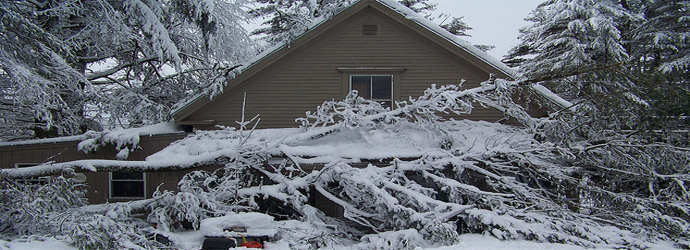Spring storms are legendary in north Texas — horrific downpours and localized flooding, hail in sizes of unbelievable enormity, and deadly tornadoes that can decimate entire towns. While you can’t anticipate exactly where and when a bad storm will strike, you can take important steps in preparing for a storm.
What Goes Up (Should Stay Up)
The part of your home most likely to be impacted by vicious spring storms is your roof. Between leak-finding torrential downpours and hail that can strike with the ferocity of a sniper, your roof is your first line of your home’s spring storm defense.
Once spring begins, have your roof inspected for any potential trouble spots. If you can find a weakness, so can summer storms. Check to be sure that the underside of your roof is structurally sound and that your shingles are secured and undamaged. Also check all of your vents, whirly birds, and any roof-mounted release/exhaust pipes are in good condition, unobstructed, and adequately shielded from both storms and pests.
What Goes Down (Should Go Down)
What kind of drainage system does your yard have? Many yards are equipped with drains in strategic locations to help absorb the runoff of fierce storms. Always know exactly where drains are in your yard, so you can be sure they aren’t clogged with grass clippings or other debris. Also check to be sure that they are securely seated and won’t be washed away by rain.
Preparing for a storm also means ensuring that the grading of your property leads rain down and away from your home, instead of back toward your home’s foundation. A constant assault of rain on your foundation can lead to weakness and breaches into your home. Often, sloping can occur over time, turning a yard that was once properly graded into a potential home disaster. Taking steps to ensure that wetness rolls away instead of toward your home can save thousands of dollars in the long run.
Prepare a Safe Place
Preparing for a storm that could spawn a tornado is much trickier than barring your house from leaks and breaches. It’s still vitally important to think through your home’s and family’s plan of action should a tornado strike. Most homes in the DFW area do not include storm cellars, and installing such a structure can be cost prohibitive. Instead, evaluate the interior of your home to determine what would be the safest place to huddle with your family and pets should the tornado sirens sound.
Follow these tips to choose the safest place in your home to go to during the threat of a tornado.
- Go to a small and enclosed interior room in your home. This room will ideally not have any windows and not have any exterior walls. Some examples of an interior safe room include a clothes or utility closet, or a closed-off bathroom.
- Stay on the ground floor. Tornadoes can rip an entire roof off a home. The more interior ceilings between you and your roof can enhance your protection during a fierce storm.
- Retrofit a room to become safer. You can reinforce walls, doors, and even windows to make them more durable when it comes to strong storms and violent tornadoes.
Spring — and summer — storm seasons are an unavoidable reality in Texas. When preparing for a storm, take your time to thoroughly assess your home and make the most prudent decisions to protect lives and property.
Image Source: Flickr/Ken
[cf]skyword_tracking_tag[/cf]






